How Spain’s ‘catastrophic’ floods led to over 200 deaths - explained through pictures
Floods left cars piled up like toys in streets, swallowed homes, and covered entire neighbourhoods in sludge as authorities report 217 fatalities
At least 217 people are dead after Spain was struck by the worst floods in recent memory that submerged towns, toppled bridges and cut entire communities off from the outside world.
The deadly floods left cars piled up like toys in streets, swallowed homes, and covered entire neighbourhoods in sludge and debris.
Muddy rivers swept away everything in their path – roads, houses and key infrastructure.
Thousands of people are still facing power and water cuts and shortages of basic goods, especially in the eastern region, the worst affected.
Follow our live coverage of Spain floods.
Rescue workers are facing challenges as they sift through the wreckage in search of survivors.
Authorities have reported 202 fatalities so far, most of them from the eastern city of Valencia.
The search for the missing people continues, but as the floodwaters recede, fears are mounting that more bodies will be found in remote or inaccessible areas. Many cars piled up in the streets are also suspected to have bodies inside.
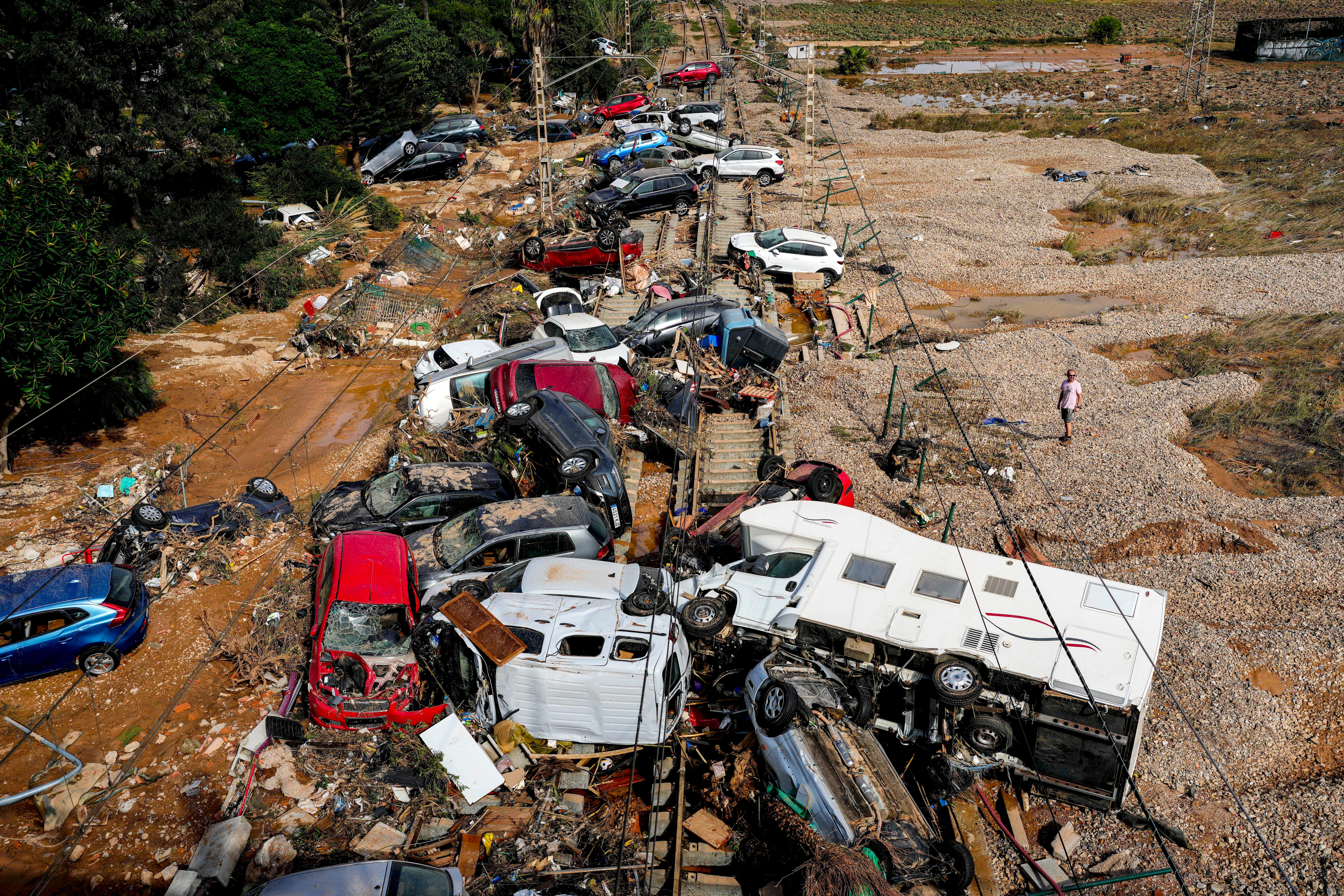
The prime minister has declared the Valencia region a “disaster zone” and warned that the devastation is “not finished”.
“Our priority is to find the victims and the missing so we can help end the suffering of their families,” Pedro Sanchez said.
Here’s all we know about the devastating floods, the causes, and the scale of the impact.
What is ‘gota fría’?
The disaster started early last week, when an unusual weather pattern known locally as “gota fría” or “cold drop” hit the eastern coast of Spain. It occurs when a cold air mass interacts with warmer, moisture-laden Mediterranean air, triggering heavy rainfall over a concentrated area.
Spain’s national weather service said it rained more in eight hours in the Valencian town of Chiva than it had in the preceding 20 months.

Rivers quickly swelled, escaping their banks and inundating towns with little warning. Then the streets turned to rivers, sweeping away cars, trees, and anything else in their path.
In the town of Gandía, floodwaters surged through neighbourhoods, forcing residents to flee within minutes.
The speed and intensity of the flooding caught many off guard, with some people stranded on rooftops or clinging to trees as the water rose.
One video showed a driver and a passenger clinging to the roof of a car as the water surged around them.
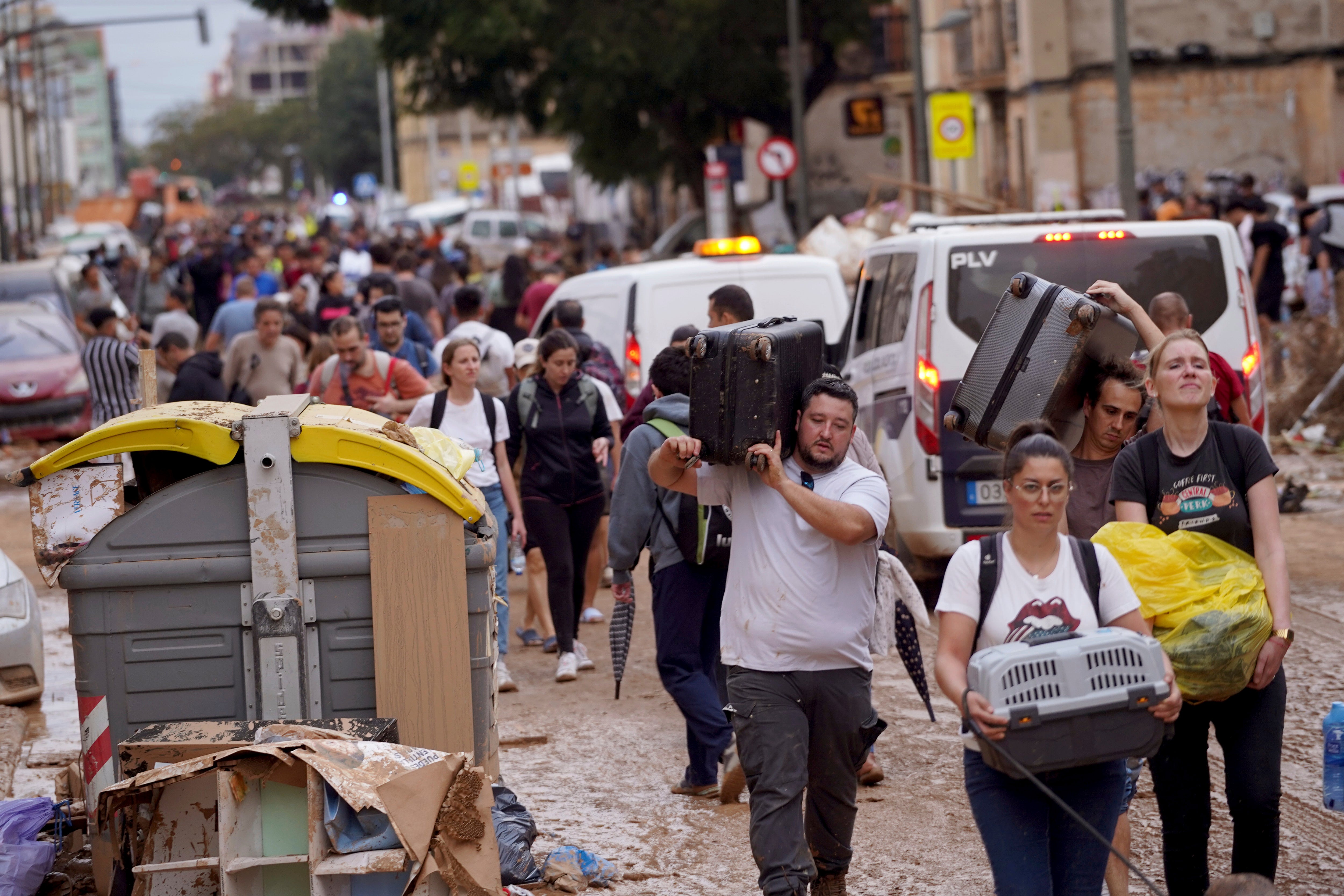
First responders worked round the clock to evacuate those in immediate danger, but many were trapped as bridges collapsed, roads were washed out and power outages spread.
‘Everything looks apocalyptic’
The floods have displaced thousands of people, forcing them to abandon homes, farms and businesses. For many, going back is impossible right now with entire residential blocks submerged in some places.
A man wept as he showed a reporter from national broadcaster RTVE the shell of what was once the ground floor of his home in Catarroja, south of Valencia.
It looked as though a bomb had detonated inside, obliterating furniture and belongings, and stripping the paint off some walls.
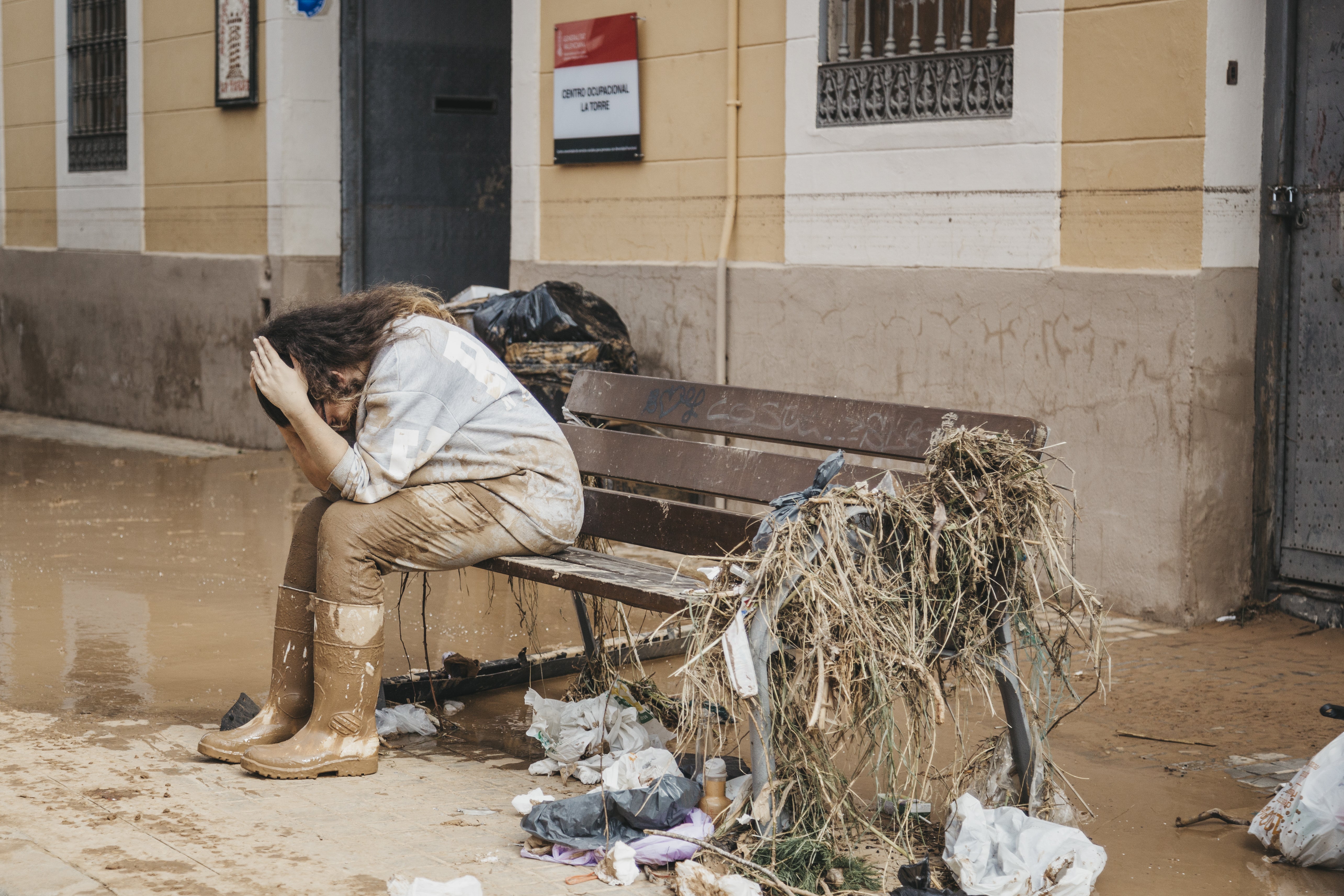
In Paiporta, mayor Maribel Albalat said Thursday that at least 62 people had perished in the community of 25,000 next to Valencia city.
“Paiporta never has floods, we never have this kind of problem. And we found a lot of elderly people in the town centre,” Ms Albalat told RTVE.
“There were also a lot of people who came to get their cars out of their garages ... it was a real trap.”
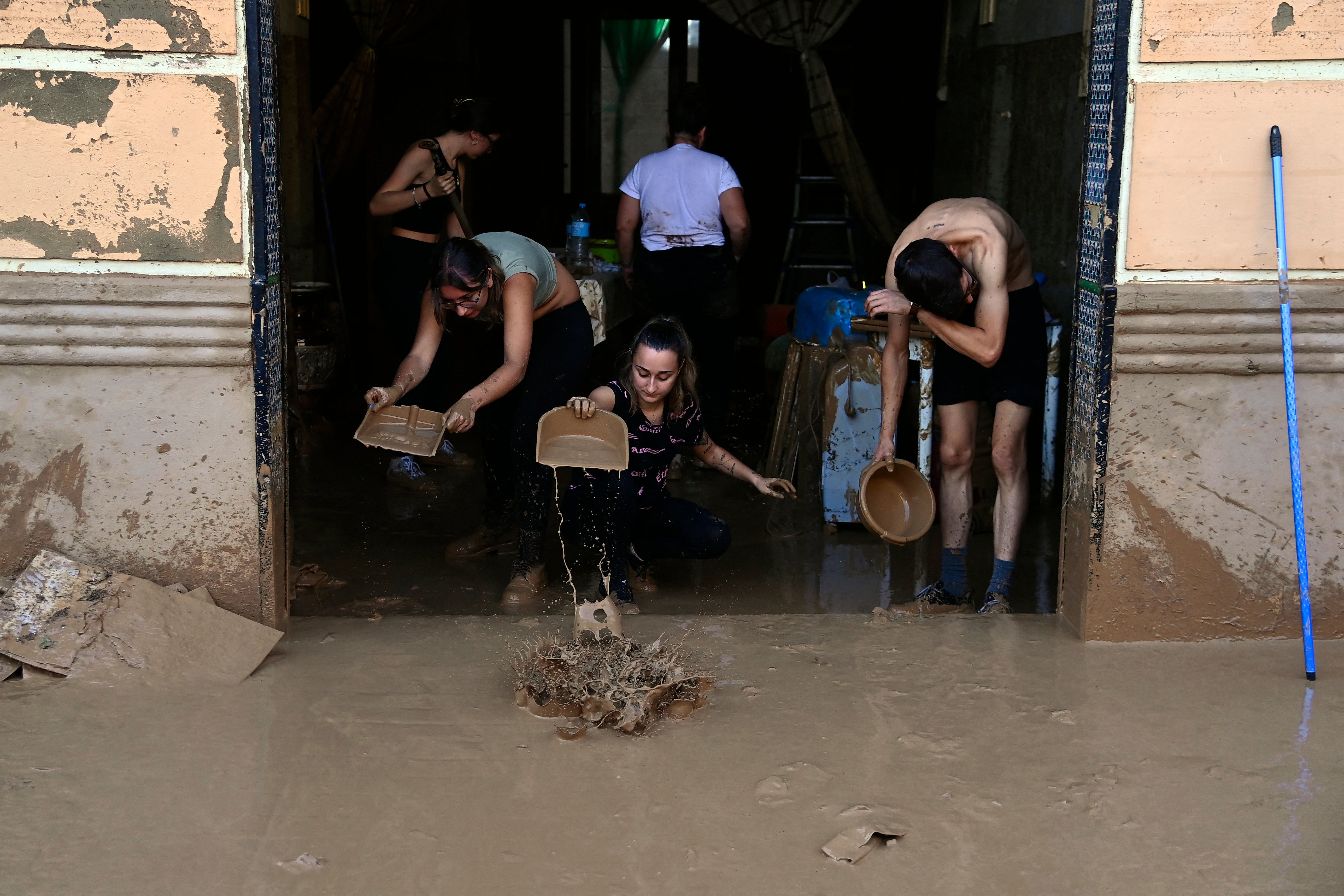
The disaster is also taking a high emotional toll as families mourn lost members and face the grim reality of starting over. Community centres and temporary shelters are struggling to accommodate the displaced, providing makeshift beds and emergency supplies to meet basic needs.
Alba Paredes Borja is from the Spanish town of Alfafar, one of the areas hardest hit by the deadly storm, where local authorities are calling for urgent help in receiving food, water and medical supplies.
“I’m terrified. Everything looks apocalyptic,” she told The Independent.
Volunteers from nearby regions have stepped in to provide aid while local charities are distributing food and clothing to those who fled with only the clothes on their backs.
Flights and trains suspended and highways broken
The floods have devastated infrastructure. Roads are strewn with broken barriers and washed-out sections, and key bridges have collapsed, leaving many areas cut off from emergency responders.
Valencia’s high-speed trains to Madrid remain suspended, with several segments of the tracks washed away, and major highways blocked by landslides and debris.
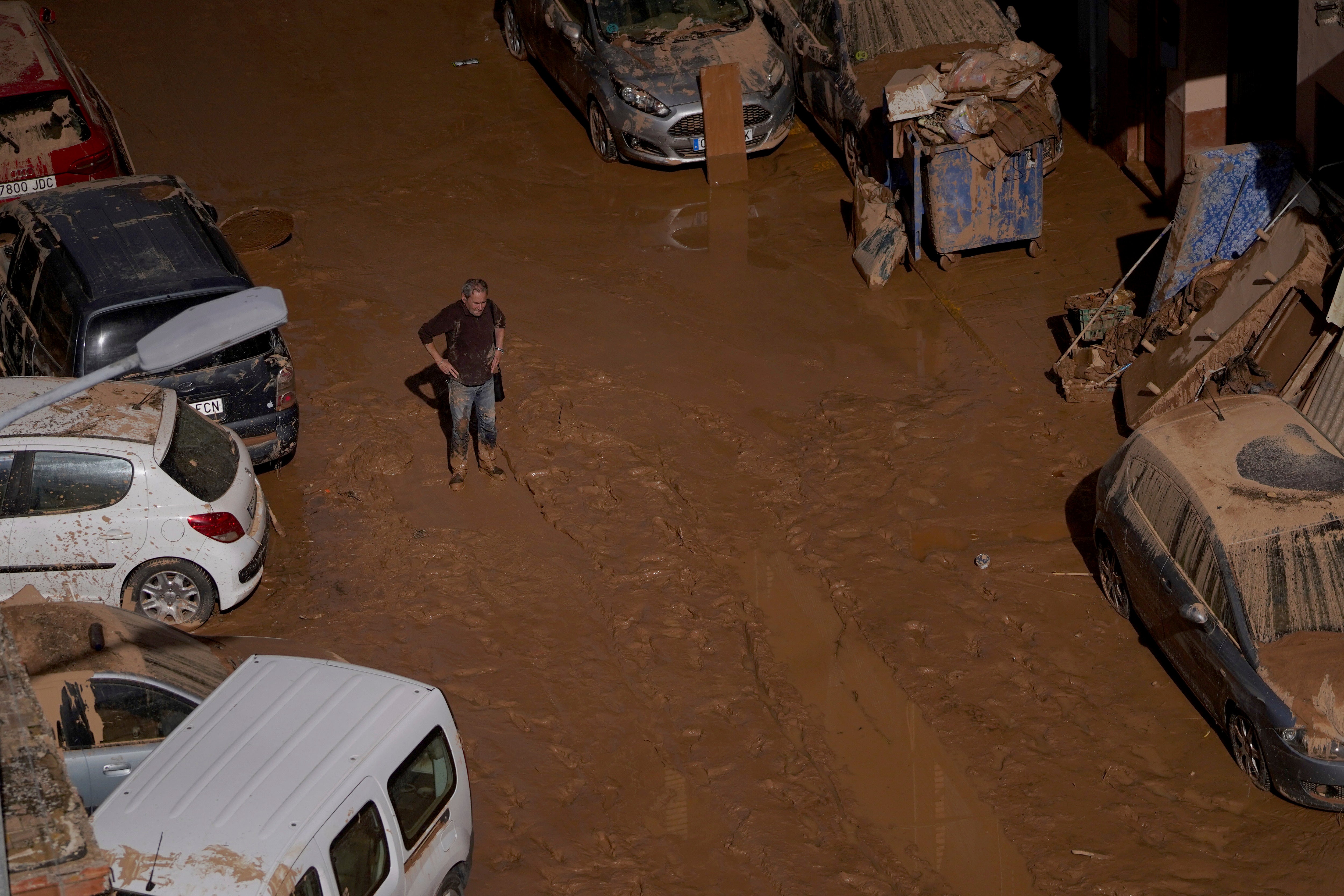
Air travel has been disrupted as well, with flights delayed or cancelled at several airports in the region. Authorities warn that restoring normal travel could take weeks as crews work to assess damage, clear rubble, and reconstruct essential routes.
On Wednesday, the UK Foreign Office issued a new warning for people planning to visit Spain and advising them to pay close attention to weather warnings.
“Severe weather and flooding is affecting many areas of Southern and Eastern Spain, particularly the Valencia region and Castilla La Mancha. Journeys may be affected,” it said.
How climate crisis exacerbated Spain’s floods
The rainfall was amplified by unusually warm Mediterranean temperatures, a result of manmade climate crisis. Warmer air holds more moisture, so higher temperatures have been known to exacerbate rainfall and related events around the world.
A rapid analysis by scientists at World Weather Attribution found that the climate crisis made Spain’s rainfall about 12 per cent heavier and doubled the likelihood of a storm as intense as this week’s deluge of Valencia.
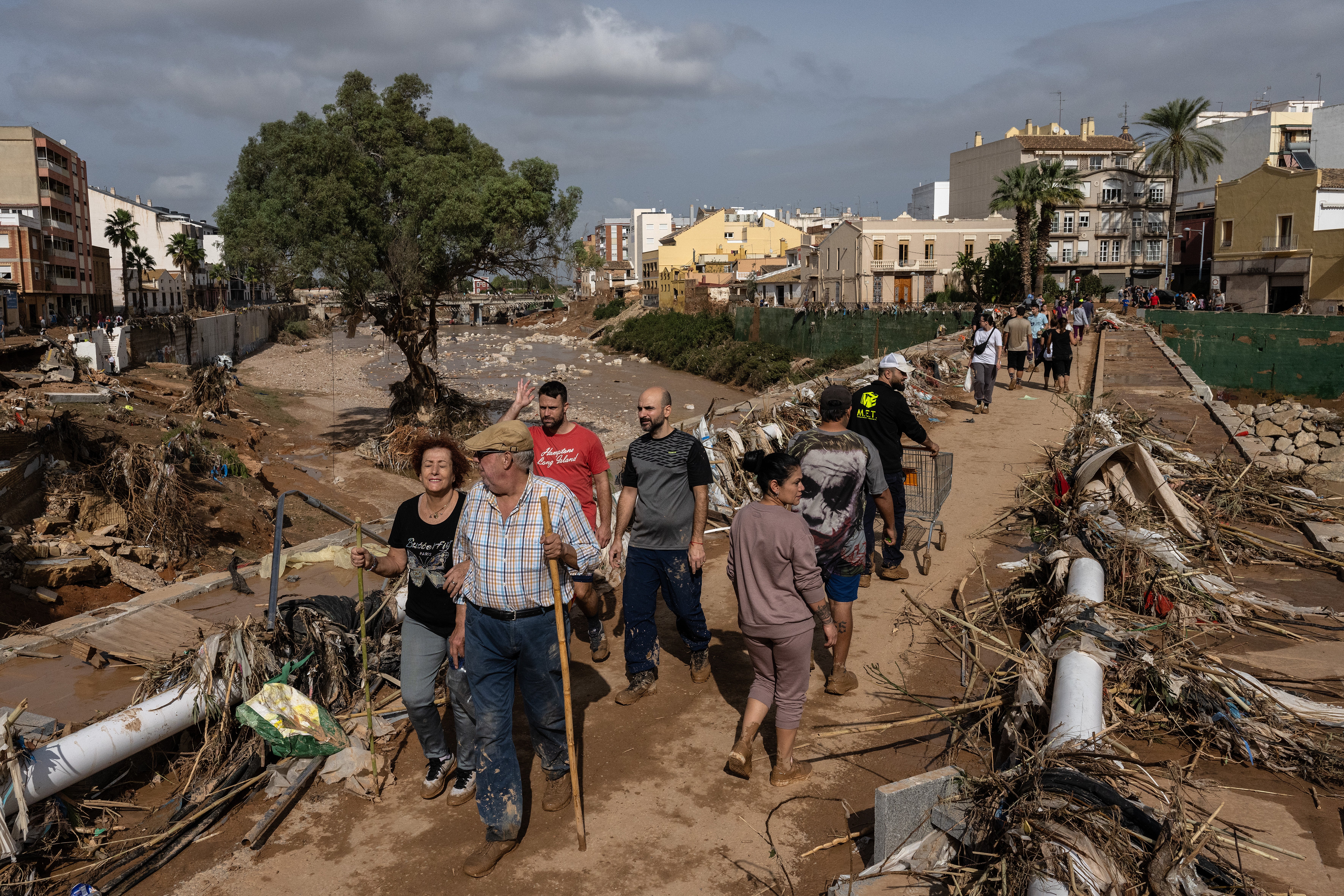
“With every fraction of a degree of fossil fuel warming, the atmosphere can hold more moisture, leading to heavier bursts of rainfall,” Dr Friederike Otto, lead at World Weather Attribution and lecturer at Imperial College London, said.
“These deadly floods are yet another reminder of how dangerous climate change has already become at just 1.3C of warming.”
Spain’s Aemet also said the climate crisis is to blame for the intensity and scale of the floods.
“It is not possible for air and sea temperatures to be increasing and everything else to remain the same,” an Aemet spokesperson told local media.
The forecaster added that not only has the temperature change intensified the phenomenon and torrential rain, it has also made them more frequent.
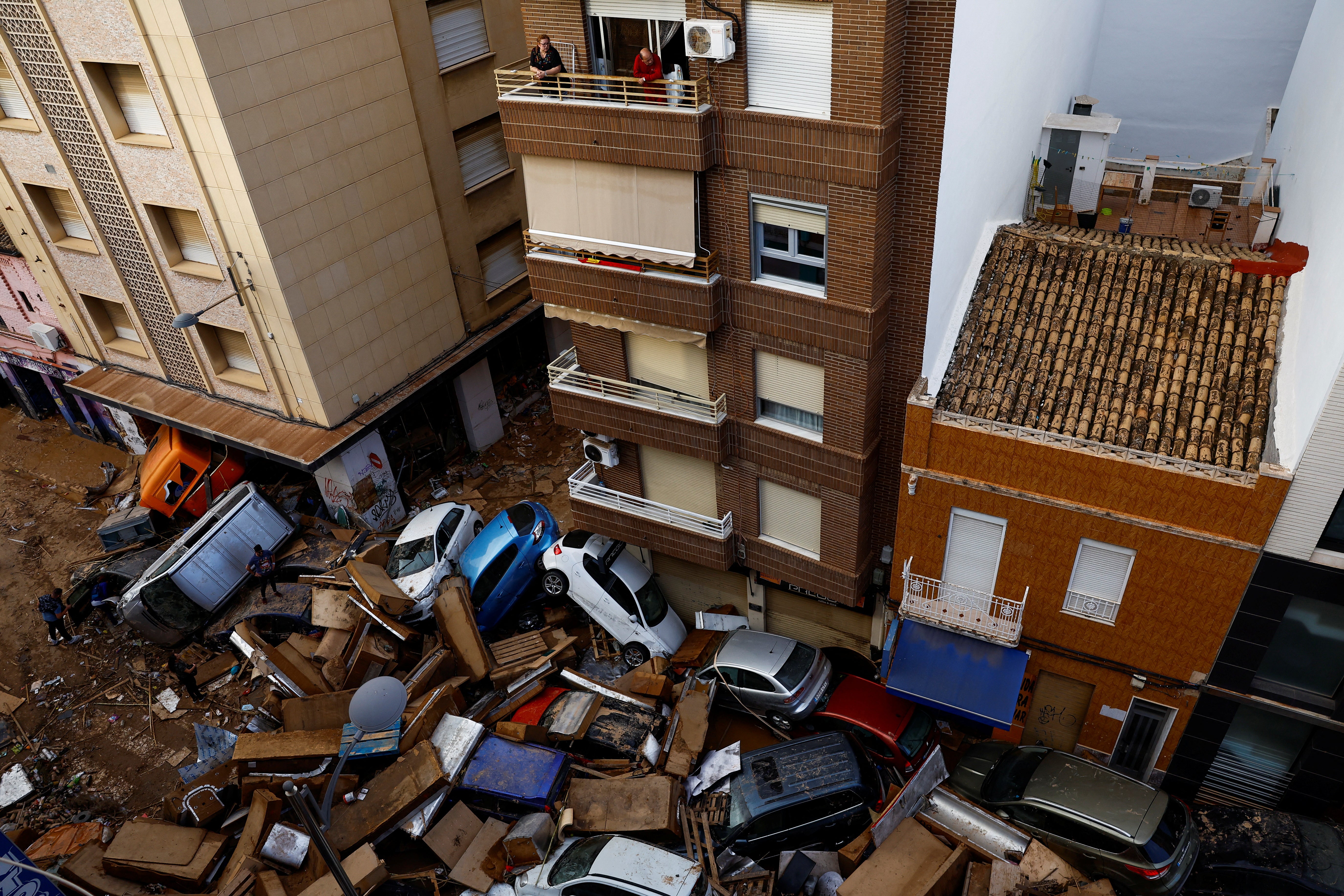
“Given the long-term warming trend, we expect events like the one observed in Spain to become more frequent,” Dr Marilena Oltmanns, research scientist at the National Oceanography Centre, said.
The increased summer heat has also meant the ground in Valencia is harder and less able to absorb the excessive amount of water.
The flood defence system could not handle the deluge. Concerns have been raised over delayed alerts and inadequate drainage, especially for smaller towns near rivers.
“Our infrastructure and civilisation are based around a climate that no longer exists,” Dr John Marsham, professor of atmospheric science at University of Leeds, said. “The ongoing increase in extremes is like watching an avoidable car crash in slow motion.”
Rescue operations continue
In response to the disaster, Mr Sánchez declared three days of national mourning and visited the hardest-hit areas to offer support.
Local and national rescue teams, alongside military units, have been deployed, racing against time to locate any remaining survivors.
One dramatic video of a rescue operation showed an elderly woman and baby being airlifted to safety.
Authorities are setting up temporary housing, coordinating food supplies and accessible health services. Financial aid packages are being fast-tracked to support reconstruction efforts, while psychologists and counsellors are offering services to help residents process the trauma of their experiences.
The rescue efforts are being hampered by heavy debris, damaged infrastructure, and treacherous, muddy conditions that have made some parts of the affected regions nearly impossible to reach.
In the aftermath, law enforcement is stretched thin. Amid the chaos, police have detained 39 people on suspicion of looting in the affected areas.
Reports of theft from flooded homes and abandoned vehicles have added to the woes of the affected people.
Police have increased patrols to maintain order and prevent further such incidents, but the need for heightened security has diverted resources away from recovery and relief operations, complicating an already challenging situation for rescue workers.
There is a growing call for investments in flood defences, early-warning systems, and sustainable city planning to protect populations from future extreme events.
Europe is the fastest heating continent on the planet. In recent months, devastating floods have overwhelmed the infrastructure across the continent.
Join our commenting forum
Join thought-provoking conversations, follow other Independent readers and see their replies
Comments
Bookmark popover
Removed from bookmarks